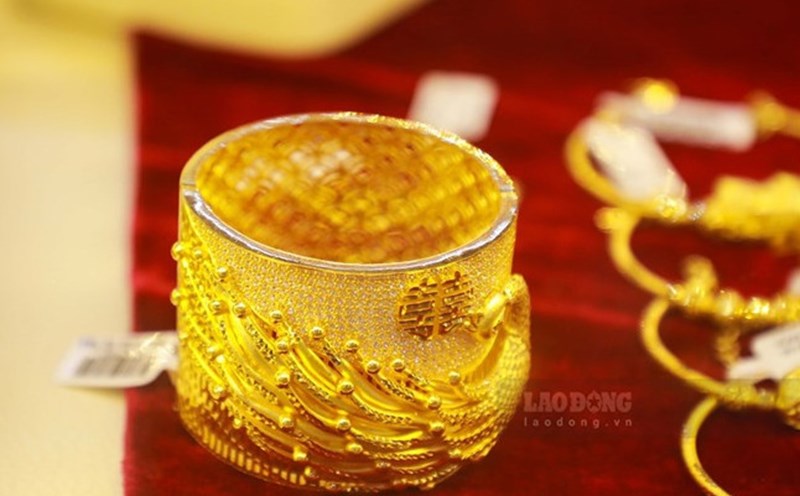Total gold consumption in China in the first quarter of 2025 reached 290.49 tons. The decline was mainly concentrated in jewelry and investment demand.
Demand for gold jewelry decreased by 26.85% compared to the same period in 2024, down to 134.53 tons. Meanwhile, demand for gold bars and gold bars decreased by 29.81%, to 138.02 tons. Industrial and other demand for gold also fell 3.84% year-on-year to 17.94 tonnes.
In terms of production, China exploited 87.24 tons of gold in the first quarter of 2025, up 1.49% over the same period last year.

The data from the CGA coincides with a new report by Ray Jia - Head of China Research at the World Gold Council (WGC).
According to Jia, the Chinese gold market will be very vibrant in March and the first quarter of 2025, with domestic gold prices and capital flows into ETFs reaching a record high, while the central bank will continue to buy gold. However, the sharp increase in gold prices has reduced demand for jewelry imports and consumption.
Jia said that the demand for wholesale gold in China in the first quarter of 2025 reached 336 tons, 29% lower than the 10-year average and down 36% compared to the first quarter of 2024.
He explained that this weakness was mainly due to a high context of comparison, because January 2024 recorded the strongest ever wholesale demand, and the increase in gold prices caused demand for jewelry to decrease.
High gold prices also have a big impact on imports, which are still weak in early 2025.
Gold imports into China almost stalled in January, reaching only 17 tons - the lowest level since February 2021, when it was due to the impact of anti-COVID-19 measures. In February, imports increased to 76 tons, but were still 102 tons lower than the average in 2024" - Jia said.
Forecasting the coming time, Jia believes that demand for gold investment will continue to be strong as the US-China trade war escalates, affecting domestic growth and assets.
The global gold price increase, driven by the restructuring of world trade order and market fluctuations, will continue to support gold prices, he said.
In addition, Chinese insurance companies have also entered the gold market, with four companies becoming members of the Shanghai Gold Exchange (SGE) in March.
Their participation will maintain long-term investment demand for gold in China, especially in the context of many uncertainties in the economy and trade, Jia said. However, he also noted that despite the upcoming May Labor holiday, record high gold prices and economic concerns are making the outlook for jewelry demand blurred.








